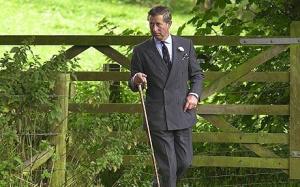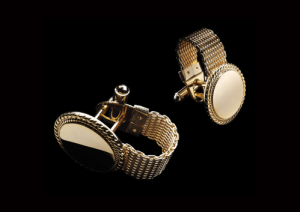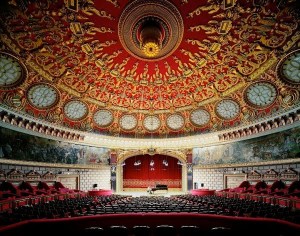Coliseum on Fire
September 12, 2010 § Leave a comment

If you’re going to be in Rome between September 17th-19th, you’ll want to make an evening pilgrimage to the Colisseum to take in an extraordinary video installation conceived by Thyra Hilden (Denmark) and Pio Diaz (Argentina) and curated by Gianni Mercurio and Christina Clausen.
On those evenings, video screens placed in the arches of the Colosseum will make it appear as if the monument is on fire. The installation, titled “Coliseum on Fire,” is part of a wider project, City on Fire, to which the artists have devoted themselves to for some years, creating virtual fires in important institutions, monuments, museums, and churches throughout Europe. The events in Berlin, Frankfurt, Kiev, Aarhus, and Copenhagen were especially memorable. The objective is to create an exchange of ideason the theme of fragility and the transience of constructions built by man.
For more information about the artists, please visit www.hildendiaz.dk.
POLAROID PORTRAITS BY ANDY WARHOL
September 8, 2010 § Leave a comment

These pictures were taken by Andy Warhol in the late 70s (apart from the McEnroe / O’Neal shot which was taken later in 1985). Polaroids posess an uncontrived raw immediacy and also (particulaly with work by Warhol) have the advantage of being definite one off originals. Clockwise from top left: Muhammad Ali, Rod Gilbert, Chris Evert, Kareem Abdul-Jabbar, John McEnroe & Tatum O’Neal and Dorothy Hamill. Avaialble from Danziger Projects.
www.danzigerprojects.com
FAMOUS PLAYERS’ TENNIS RACKETS
September 8, 2010 § Leave a comment
A splendid site called ‘woodtennis.com’ sells a collection of mint and nearly mint old tennis rackets. A section of the website is dedicated to the rackets of the famous players. In no particular order (you can macth them up yourselves) we have here rackets used by the following players: Bjorn Borg, Mats Wilander, John Mcenroe, Stan Smith, John Newcombe, Jimmy Connors and Rod Laver.
Prince of Wales tells Vogue readers to wear old clothes
September 6, 2010 § Leave a comment
The Prince of Wales has urged readers of Vogue to wear more recycled clothes and natural fabrics to reduce waste and conserve the world’s resources.
In an article for the September issue of the fashion magazine, also published online, he speaks about his “passion for reusing and repairing” and praised the trend for ‘vintage’ clothes “because they save scarce resources and avoid waste”.
He cited wool as an example of a natural material and pledged to campaign to persuade consumers to choose it over “artificial fibres made from oil derivatives”.
He wrote: On the whole, the older some things are, the more comfortable and familiar they become; they can even be adapted to look new in a different context.
“For example, someone has been imaginative enough to make sets of cuff links out of the previous engine from my 40-year-old Aston Martin and to sell them in aid of my Trust for young people. I even have a pair of shoes made from bales of leather salvaged from an eighteenth-century wreck off the Southwest of Britain. They are totally indestructible and will see me out.”
The Prince is frequently seen in a winter coat, modelled on one owned by his great-uncle, King Edward VIII, for 23 years. It was made for him by Les Bergquist, a tailor at the Savile Row firm Anderson & Sheppard.
Swank cufflinks by Timothy Everest
September 6, 2010 § Leave a comment
Described as the champion of the New Bespoke Movement, Timothy Everest has become the tailoring choice for the capital’s indeed the world’s most discerning and particular. Steering a rare course between trad stuffiness and self-conscious modern grooviness, the result is sharp, impeccably-crafted, effortless style.
Now the purveyor of similarly-flavoured accessories, he has created these cufflinks, based on original 1940s Swank designs, exclusively for 20ltd.com. Available in 9 carat gold and in silver with a lapis lazuli stone, they are available in 5 & 20 editions respectively.
Dunhill Pure Stainless Steel Jenga game
September 6, 2010 § Leave a comment
Few might abstract a metaphorical meaning of a simple stacking game, regarding the increasingly unstable structure while the tower grows as the game progresses, this or the simple fact that jenga-derivatives are fun, must be the reason for the venerable British luxury brand Dunhill to release this ultimate masculine version of topple bricks. Definitely an unique detail in any man’s office, a set of blocks made of pure stainless steel that come delivered in a black lacquered carbon fibre box – either stowed away or scattered over the desk, this is a game for the confident man who proudly maintains his inner child.
Inedit: a beer created by El Bulli and Estrella Damm for Haute Dining
August 16, 2010 § Leave a comment
Ferran Adria’s Brew
The world of bespoke beers is currently mired in its own multi-faceted version of the space race. On one side you have the high-octane stakes, significantly raised by the recent, much-reported release of Scottish brewery BrewDog’s wincingly alcoholic “End of History”—notable for its 55% alcohol content, $765 price tag and the fact that each one of the 12 available bottles comes neatly encased in the carcass of a rodent. Thirsty? Thought not. On the other side of the field, a far more—ahem—sober battle is being waged, one based on the premise of taste and drinkability.
Where once beers were solely considered a mollifying match for fiery Asian dishes, respectable food publications now regularly tout the merits of white ales and Belgian saisons as flattering compliments to refined cuisines of the world. While common consensus dismisses the vast majority of Spanish beers, Barcelona-based mega-brewer Estrella Damm has fired an admirable salvo with its latest offering, Inedit, the world’s first beer to be expressly crafted as an accompaniment to food. Developed by a committee with fearsome pedigree (gastronomic mastermind Ferran Adria, alongside his El Bulli colleagues Juli Soler, David Seijas and Ferran Centelles), Inedit is recommended to be served chilled in an ice bucket and poured slowly into a white wine glass, no more than half-filled—perhaps pedantic directions but, given the panel’s collective experience, entirely worth listening to.
Fratelli Borgioli
August 16, 2010 § Leave a comment
Since the early 50s, the family-owned shoemaker Fratelli Borgioli perpetually contributed a significant part to the evolving reputation of Italian shoes. Today, the term ‘Made in Italy’ is a mark of quality and stands for a distinguishing appearance. Fratelli Borgioli is primary known for well-executed Goodyear welted shoes and a special overlapping upper construction that also adds character to this leather shoes of their current collection. The overlapping construction in combination with a natural brown Italian leather makes this almost quiet pair a subtle looker for almost any occasion.
Opera by David Leventi
August 10, 2010 § Leave a comment
While our obsession with amazing modern theaters is well documented, we certainly appreciate the sense of architectural history shown in the photography of David Leventi. Leventi has traveled the world over, photographing classic music hall architecture for his series aptly titled “Opera”. The detail, the symmetry, the vanishing point at center stage make these images truly breathtaking. It is touching to see old architecture so carefully preserved here, as the alternative of abandoned places is one to truly regret.
more on www.davidleventi.com
Gentleman’s Clubs of London
August 10, 2010 § Leave a comment
Although the clubs were enormously popular with upper-class London males in the nineteenth century, they had actually originated much earlier, some believe with White’s, which began as a chocolate house in 1693 and had such famous members as Pope, Swift, Steele, and Gray. Coffee houses in the eighteenth century also housed gatherings of male customers, gatherings which became more formalized in club membership eventually with permanent quarters on Pall Mall and St. James Street, close to Whitehall and the royal palaces.
The nineteenth century was the age of clubs, each with its own building resembling a stately mansion where gentlemen smoked, drank, ate, read (in libraries or news rooms), gambled, played billiards, and socialized among their peers. Members were elected (or not–that is, blackballed) and clubs members often had common political or recreational interests.
buy the book









